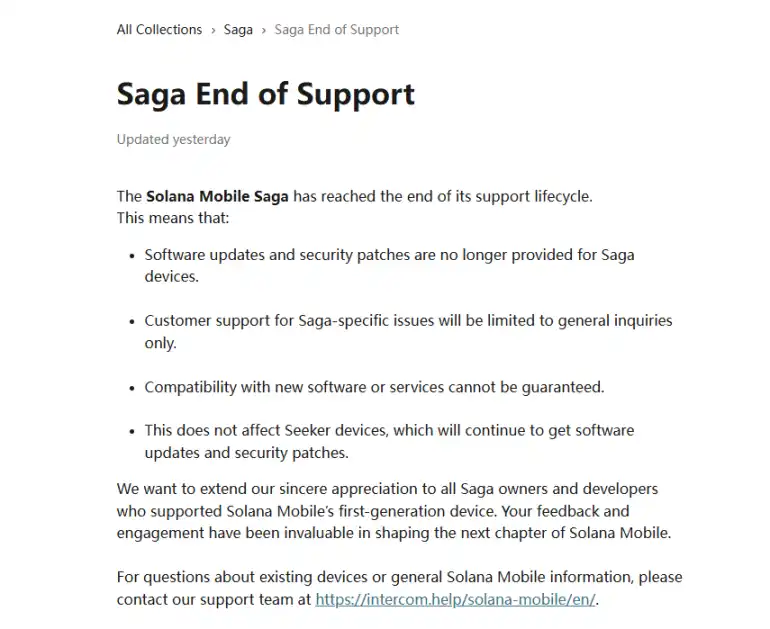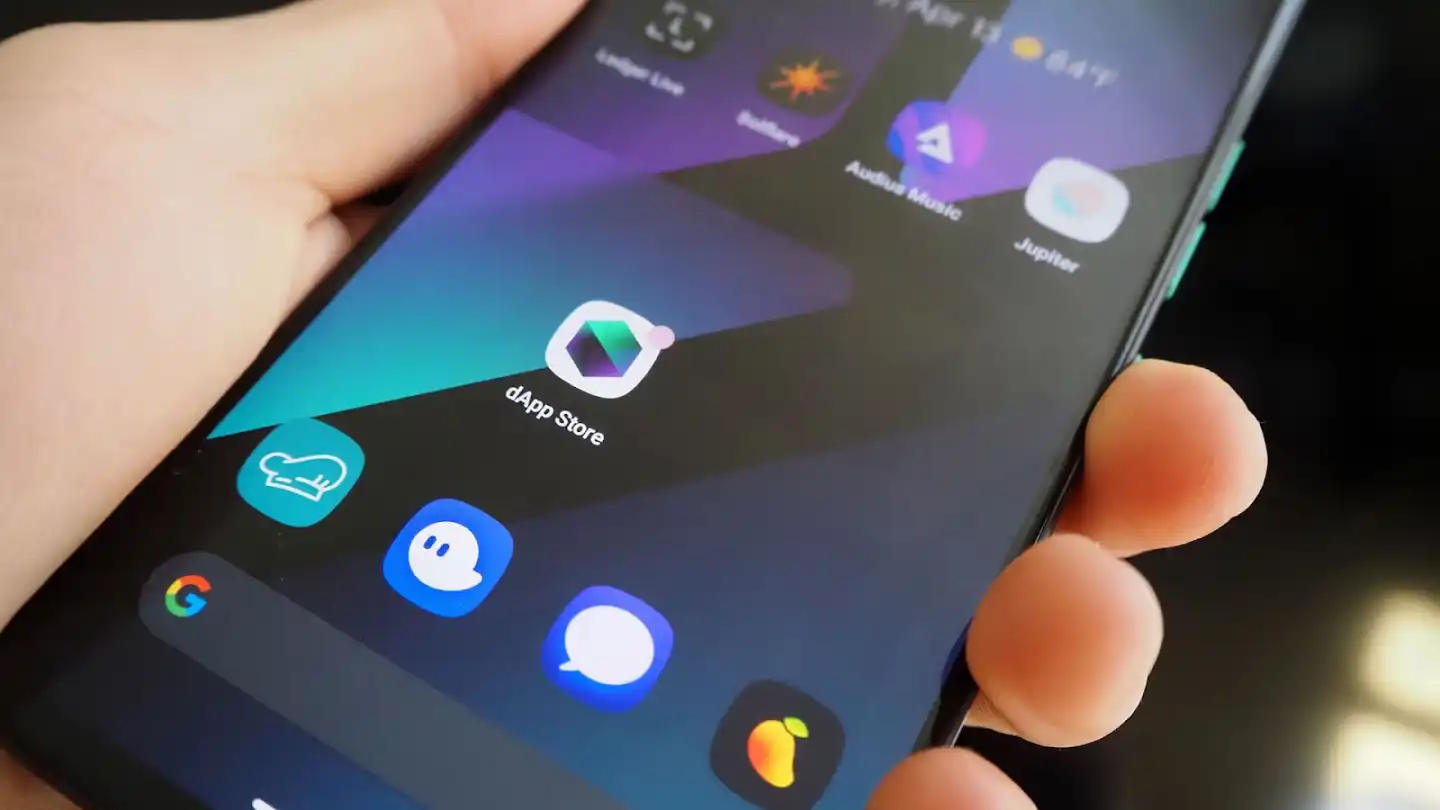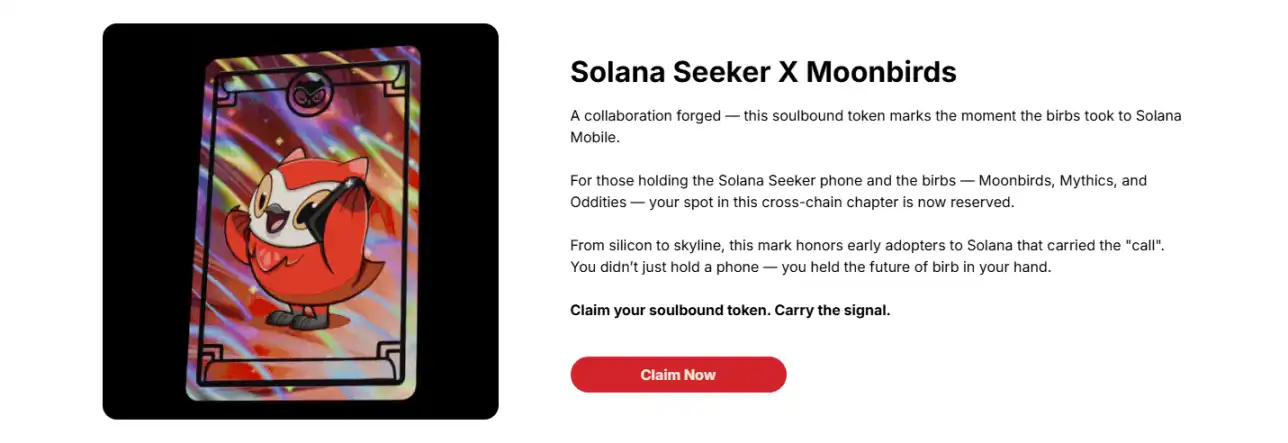Solana Saga phone discontinued after only two years—can the second-generation Seeker avoid repeating the same fate?
Is the Web3 phone truly an innovative product with real value, or is it merely a "pseudo-demand" that can only survive through external incentives?
Original Title: "Solana Saga Discontinued After Only Two Years: Can the Fully Pivoted Seeker Avoid the Same Fate?"
Original Author: Frank, PANews
The Web3 phone Solana Saga, once highly anticipated by the industry, has terminated its technical support just two years after its launch. From being ignored, to sparking a buying frenzy due to airdrops, and finally to a hasty end, the devices of 20,000 early users have almost become "electronic bricks."
The dramatic reversal of Saga has triggered widespread sighs and deep questioning throughout the industry: Is the path of crypto phones a false proposition? Was Saga's short and dazzling lifecycle an expensive failed experiment, or did it light a torch for a non-traditional path to success for those who follow? As Solana Mobile fully pivots to its second-generation product Seeker, these questions become even more urgent.
Support Ends After Only Two Years: The Multiple Considerations Behind Solana Mobile
The abrupt ending of Saga came as a surprise.
According to the usual practice of traditional phone manufacturers, technical support for a phone typically lasts 5 to 7 years. But Saga's support ended after just 2 years. The main reason behind this perhaps reveals the huge operational differences between smart hardware products and typical Web3 projects.
From a business perspective, the Saga project itself was almost destined to be a financial loss. The total sales of Saga phones reached about 20,000 units, far short of its target of 50,000 units, and could not possibly cover the R&D, production, and marketing costs of high-end hardware. Even niche models from traditional phone manufacturers usually need to reach hundreds of thousands of units to ensure operational viability. Providing long-term support for an old product line with only 20,000 users is a heavy financial burden.
To make matters worse, Saga's hardware partner OSOM went bankrupt in September 2024, making long-term firmware and driver updates almost impossible. Therefore, Solana Mobile's abandonment of Saga became a rational, even inevitable, business decision. They chose to cut losses and focus limited resources on projects with a higher chance of success.
From a hardware perspective, Saga itself is a well-equipped high-end Android phone. Compared to ordinary phones, its built-in security design and dApp applications do address the pain points of transaction security and dApp access for heavy crypto users. However, Saga's failure proves that these "product strengths" are not enough to convince users to pay a $1,000 premium, as the vast majority of Web3 tasks can also be completed on regular phones, albeit with a slightly different experience.
The most direct threat is the sharp increase in security risks. As new vulnerabilities are discovered, Saga phones will become increasingly susceptible to hacker attacks. For a device whose core design philosophy is to securely handle crypto assets, this is undoubtedly fatal. Secondly, there is the "diminishing utility" problem. As Android OS and dApps continue to iterate, Saga may not be able to run new versions of applications, eventually leading to "potential application failures" and loss of functionality.
Moreover, Saga's past sales miracle was not due to the rediscovery of its product strength as a phone, but rather the value of its financial arbitrage potential. However, this model is unsustainable and full of risks. It attracts speculators seeking short-term profits, not real users loyal to the product and ecosystem. Once airdrop expectations weaken or the market cools, this demand will quickly evaporate.
Furthermore, as the most important hardware device in modern society, the actual usage scenarios of phones go far beyond airdrops and crypto activities. This is also the main reason why Saga could be sold but seemingly not used.
However, the direct consequence of this business decision is borne by the 20,000 Saga users. Solana Mobile announced the cessation of all software updates and security patches, meaning these devices will permanently remain on the last security version from November 2024.

Surprisingly, there was almost no visible user reaction on social media to the news of the end of technical support. After media reports, Solana Mobile also chose to remain silent, only increasing the frequency of retweets related to Seeker activities. This phenomenon suggests that the actual number of active Saga users may be far lower than the proportion of users who claimed airdrops.
From Unnoticed to Hard to Find: Luxurious Airdrops Reverse Sales
Looking back at the lifecycle of Solana Saga, it was like a roller coaster ride.
In May 2023, the Saga phone was officially released, priced as high as $1,000, directly targeting flagship models from Apple and Samsung. Solana Mobile's initial goal was to create a native Web3 device for crypto users and developers, breaking the Apple and Google duopoly through hardware-level security (Seed Vault) and an uncensored dApp store. However, this grand narrative failed to move consumers.
After launch, the market response to the Saga phone was extremely lukewarm. By early December 2023, more than half a year after its release, Saga sales hovered between 2,200 and 2,500 units, far from the "developer ecosystem critical mass" of 25,000 to 50,000 units set by Solana co-founder Anatoly Yakovenko. To rescue the situation, Solana Mobile slashed the price by 40% to $599 in August of the same year, but this still failed to effectively stimulate demand. The mainstream tech world was even harsher, with well-known reviewer Marques Brownlee (MKBHD) naming it the "most failed smartphone of 2023," a title that accurately summarized Saga's awkward situation at the time.
Just as Saga was about to be forgotten by the market, an unexpected catalyst completely reversed the situation—MEME coin BONK. Each Saga phone came with an airdrop of 30 million BONK tokens, which was almost worthless at launch. However, as the Solana ecosystem fully revived at the end of 2023, the price of BONK skyrocketed exponentially.

By mid-December 2023, the value of this airdrop had exceeded $1,000, far higher than the phone's then price of $599. A clear arbitrage opportunity was born: buy the phone, claim the airdrop, and get instant profit. This news spread virally on social media, and Saga's narrative instantly shifted from a failed tech product to a hot financial tool.
Sales soared. In just 48 hours, Saga's sales increased more than tenfold and quickly sold out in the US and European markets. A frenzied secondary market emerged, with brand-new, unopened Saga phones selling for as much as $5,000 on platforms like eBay—more than eight times the retail price. Saga was no longer just a phone, but a "ticket" to potential future airdrop wealth.
Saga's unexpected sell-out provided Solana Mobile with a new idea: by leveraging potential airdrop expectations, market demand could be greatly stimulated. They quickly seized the opportunity, announcing the launch of the second-generation phone "Chapter 2" (later renamed Seeker) just one month after Saga sold out in January 2024. As mentioned earlier, Seeker learned from Saga's lessons: the price was drastically reduced to $450-500, the hardware configuration was more in line with a mid-range positioning, and the target was the broader mass market.
The market response was explosive. Driven by strong expectations for future airdrops, Seeker received over 60,000 orders within the first three weeks of pre-orders, eventually surpassing 150,000 pre-orders, with expected revenue exceeding $67.5 millions. Even before the phones were shipped, the value of token airdrops such as $MEW and $MANEKI received by pre-order customers had already exceeded the purchase cost of the phone. From this perspective, Saga was more like a trailblazer, helping the second-generation product Seeker build a basic ecosystem of hundreds of thousands of users and a sales model driven by airdrops.
However, for the more than 150,000 Seeker pre-order customers, will their devices face the same fate as Saga in two years?
Fully Pivoting to the Second-Generation Seeker Device: Can It Solve the Web3 Phone Dilemma?
Saga's experience forces us to re-examine the core proposition of Web3 phones. Are they truly innovative products with real value, or are they a "pseudo-demand" that can only survive with external incentives?
As a second-generation model, Seeker is trying to avoid repeating the same mistakes. After ending support for Saga, Solana Mobile has now fully shifted to the second-generation product Seeker, a lower-priced phone also focused on crypto features, starting at $500—half the launch price of Saga—with early pre-order customers enjoying a $50 discount. In addition to a more reasonable price, Seeker also inherits some features from its predecessor, while upgrading hardware and adding several user-friendly new features, such as SeekerID and an improved decentralized app store.
Notably, Seeker also plans to launch a native ecosystem token, SKR, to incentivize developers and users, promote ecosystem development, and achieve better alignment. Although specific details of the token have not yet been announced, the official statement says it will be distributed directly to developers and users. Moreover, Seeker has strengthened incentive programs linking other apps and activities within the phone ecosystem.
For example, Seeker has launched a campaign with the Backpack wallet app, waiving the first $1,000 in transaction fees on Seeker phones. On October 23, Moonbirds also launched the Seeker X Moonbirds SBT airdrop for Seeker. According to official data, there are already more than 160 applications built within the Seeker ecosystem.

But can this kind of ecosystem building truly change the current situation where users buy but do not use the devices? The answer is still unknown. As the first-generation product in the Solana phone narrative, Saga did succeed in setting a marketing example, but also exposed a core issue: Is the core competitiveness of Web3 phones their commodity attributes or their financial attributes? If it is merely an airdrop ticket, is it really necessary to bear the heavy operational costs required of a phone product? If it wants to remain competitive without relying on airdrop expectations, what should be the core selling point of a Web3 phone in such a mature phone market?
Now, the market situation for the second-generation Seeker is much better than Saga, but until these key questions are answered, Saga's fate may still be repeated.
Disclaimer: The content of this article solely reflects the author's opinion and does not represent the platform in any capacity. This article is not intended to serve as a reference for making investment decisions.
You may also like
Stable closes initial pre-deposit phase after reaching US$825 million
JPMorgan will allow the use of Bitcoin and Ether as loan collateral
Solana Attracts Institutions with $700 Million in Real Assets and Zero Failures
JustLend DAO starts burning 560 million JST
